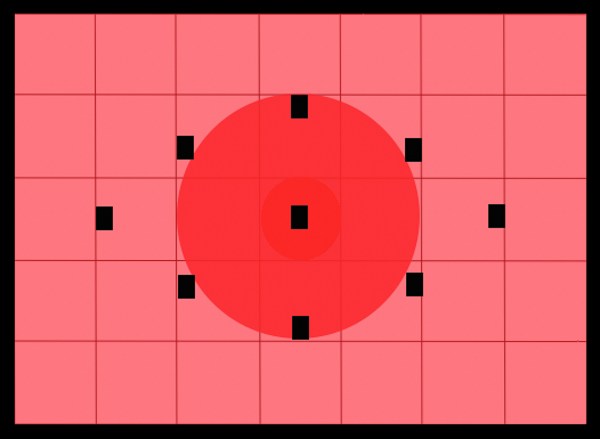Modern cameras can measure the brightness of the plot in different ways, and depending on this, the metering modes have different names and evaluate the amount of light penetrating the camera differently. The main purpose of metering is to prevent the plot from overexposing or falling into blackness. But what to do with the contrasting plot? Let's see what exposure metering modes are and how to use them correctly. There are four types of metering . In different cameras, they can appear in different numbers and combinations. Spot, partial, center-weighted, and matrix . The spot metering in its name speaks for itself: the brightness in it is measured by a point. By default, this is the center focus point, but you can set the settings so that this point coincides with any other selected focus point. The illumination of the remaining field of the frame in this case is not taken into account at all. This type of metering is convenient, for example, when the brightness of the main object is very different from the brightness of the background: then you have to sacrifice the second and force the camera to evaluate and work out the illumination of only the zone the photographer needs. Partial metering is similar to spot metering , only the area for assessing illumination with it is slightly larger: if in spotlight it is 3-5% of the frame, then in partial it is already about 15-17%. To imagine this area, pay attention to the circle in the viewfinder. The exposure meter takes into account the brightness of everything that falls into this circle. With strong differences in brightness, when there is, for example, the risk that a very bright background will “interrupt” the details of the shaded object, you need to set a point or partial metering mode, depending on how large the zone is, the brightness of which is fundamentally important for you.
What is metering: choosing a metering point in a frame

The third type of measurement, centered-weighted , suggests that the camera, as in partial metering, primarily focuses on the illumination of objects in the central circle, but takes into account the area around it. Imagine the sun with rays. Now look into the viewfinder. The same circle that we already know is the sun, and mentally draw rays around it. This is how the centered-weighted metering mode works: it takes into account the middle of the plot and its surroundings, ignoring the corners. If you need to take a portrait (or some object) against a background that is not very important, but still matters for the plot, you should use center-weighted metering. Most often, it is in the camera by default, as it is well suited for most scenes.
The latter view - matrix metering , it is also called multi-segment or multi-zone, captures the entire area of the frame . The principle of its operation is as follows: the entire field of the frame is divided into zones (in modern cameras there are more than a thousand), the exposition of each of them is evaluated separately, after which all the data is combined, giving the photographer "the average temperature in the hospital," that is, the overall brightness of the plot , taking into account both the middle and the angles of the future frame. If you are going to shoot a uniform in brightness or low-contrast frame, then matrix metering is most suitable.

